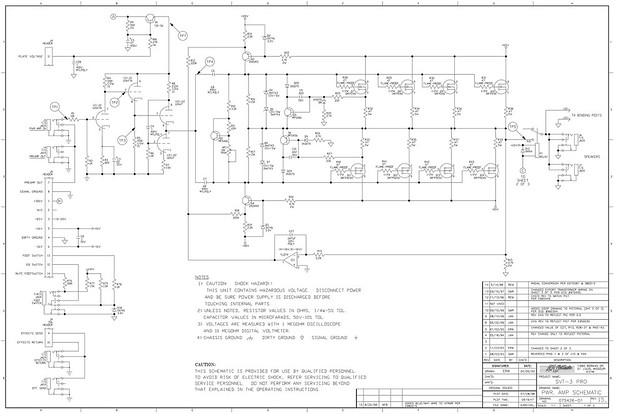Hi guys
I have an Ampeg svt 3 pro bass head with a distorted output.
It was with a tech before me and he swapped out the 12au7 and replaced it with a 12ax7
and sent it back to the customer. The problem remained the same now it is in my hands.
I've read a lot of the posts on here about this amp. I know the 12au7 on the output section can cause distortion if it's bad.
So I have replaced this tube with a proper one. Still got a distorted output.
Tested pre amp and it is good.
Tested output transistors in circuit they seem to be fine.
I've gone through the test points on the schematic and measured voltages and none seem to stick out as being off the wall or not there.
I read another post that there is a bias pot that you can turn to get rid of distortion.
I've tried turning this with a sine wave on the input. Initially the distortion went away but then it came back.
Now I don't want to mess around with this pot too much as I started hearing a strange noise(like a high pitched sine wave!!)
with no input connected and the fan started working harder.
I got a triangular wave on pins 4 and 5 of the 12ax7 on output section with scope.
Got a strange waveform on pins 4 and 5 of the 12au7 like a distorted sine wave and much higher voltage than the 12ax7.
Not sure of the significance of this but just thought i'd mention it.
Any thought on narrowing down where the distortion is coming from?
Bad cap or resistor in output section?
Joe
I have an Ampeg svt 3 pro bass head with a distorted output.
It was with a tech before me and he swapped out the 12au7 and replaced it with a 12ax7
and sent it back to the customer. The problem remained the same now it is in my hands.
I've read a lot of the posts on here about this amp. I know the 12au7 on the output section can cause distortion if it's bad.
So I have replaced this tube with a proper one. Still got a distorted output.
Tested pre amp and it is good.
Tested output transistors in circuit they seem to be fine.
I've gone through the test points on the schematic and measured voltages and none seem to stick out as being off the wall or not there.
I read another post that there is a bias pot that you can turn to get rid of distortion.
I've tried turning this with a sine wave on the input. Initially the distortion went away but then it came back.
Now I don't want to mess around with this pot too much as I started hearing a strange noise(like a high pitched sine wave!!)
with no input connected and the fan started working harder.
I got a triangular wave on pins 4 and 5 of the 12ax7 on output section with scope.
Got a strange waveform on pins 4 and 5 of the 12au7 like a distorted sine wave and much higher voltage than the 12ax7.
Not sure of the significance of this but just thought i'd mention it.
Any thought on narrowing down where the distortion is coming from?
Bad cap or resistor in output section?
Joe


Comment